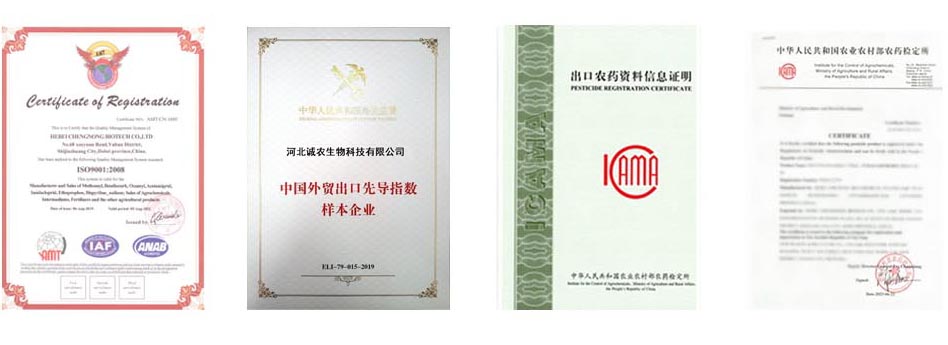
dec . 01, 2024 05:47 Back to list
Mushroom Suppliers Offering Chlorothalonil for Effective Crop Protection and Management
The Role of Chlorothalonil in Mushroom Cultivation A Comprehensive Look at Suppliers
Mushroom cultivation has gained significant traction over the years, not only as a viable agricultural practice but also as a lucrative business opportunity. As the demand for mushrooms grows, so does the importance of effective pest and disease management in ensuring high yields and quality produce. Among the various fungicides used in the industry, chlorothalonil stands out due to its broad-spectrum efficacy against a range of fungal pathogens. This article delves into the role of chlorothalonil in mushroom cultivation, its benefits, and the importance of finding reliable suppliers.
Understanding Chlorothalonil
Chlorothalonil is a multi-site contact fungicide widely regarded for its effectiveness in controlling various diseases in crops, including mushrooms. Its chemical composition allows it to disrupt key cellular processes in fungal pathogens, preventing them from growing and reproducing. This makes chlorothalonil particularly useful in the cultivation of edible fungi, where diseases can severely undermine production.
The primary diseases that chlorothalonil helps combat in mushrooms include cobweb disease caused by *Dactylium dendroides*, as well as various molds and other fungal infections that can threaten crops at different stages of growth. By applying chlorothalonil appropriately, mushroom growers can reduce the risk of these diseases, thereby increasing the possibility of higher yields and better quality mushrooms.
The Benefits of Using Chlorothalonil
1. Broad-spectrum Efficacy One of the main advantages of chlorothalonil is its ability to control a wide range of fungal diseases. This is particularly beneficial for mushroom cultivators who face multiple threats to their crops throughout the growing process.
2. Resistance Management The mode of action of chlorothalonil as a multi-site fungicide means that it plays a crucial role in managing resistance. Continuous use of fungicides with a single site of action can lead to resistant strains of pathogens. By incorporating chlorothalonil into a broader disease management strategy, cultivators can minimize resistance development.
3. Safety and Environmental Considerations When applied following recommended guidelines, chlorothalonil has a favorable safety profile for both users and consumers. Its degradation in the environment allows for a reduced risk of long-term residues, making it a safer choice in agriculture.
chlorothalonil for mushrooms suppliers

4. Maximizing Yield and Quality Healthy mushrooms not only fetch better market prices but also offer improved nutritional value. By effectively controlling fungal diseases, chlorothalonil helps ensure the overall health of mushroom crops, leading to consistent quality and increased profitability for growers.
Finding Reliable Suppliers
While chlorothalonil offers numerous benefits, the effectiveness of its application heavily depends on sourcing a high-quality product from reputable suppliers. When searching for chlorothalonil suppliers, mushroom growers should consider the following aspects
1. Regulatory Compliance It is crucial that suppliers adhere to local and international regulations regarding the sale and distribution of chemical products. This ensures that growers are purchasing legitimate products that meet safety and environmental standards.
2. Product Quality Not all chlorothalonil products are created equal. Growers should seek suppliers who provide third-party testing data or certifications that validate the quality and potency of their products.
3. Technical Support Effective pest and disease management often requires more than just the right product. Suppliers that offer technical support, including guidance on application rates, timing, and safety practices, can significantly benefit mushroom growers.
4. Customer Reviews and Reputation Exploring customer reviews and researching a supplier's industry reputation can provide insights into their reliability and the quality of their products.
Conclusion
Chlorothalonil plays a crucial role in the successful cultivation of mushrooms by managing fungal diseases effectively. Its broad-spectrum efficacy and role in resistance management underscore its importance in modern mushroom farming. However, the success of using chlorothalonil hinges on sourcing from reliable suppliers who offer quality products and support. By prioritizing these factors, mushroom growers can enhance their production and meet the growing demands of the market.
-
Kasugamycin Fungicide: Efficient Bacterial & Fungal Control
NewsAug.02,2025
-
Emamectin Benzoate: AI-Optimized Pest Control Solution
NewsAug.01,2025
-
Best Abamectin 95% | Top Pesticide for Crop Protection
NewsJul.31,2025
-
Insecticide Spirotetramat 11% + Thiacloprid 11% SC at Good Price
NewsJul.30,2025
-
Best Abamectin SDS - Premium Quality & Reliable Safety Data
NewsJul.29,2025
-
Agrochemicals Pesticides Solutions for Sustainable Farming
NewsJul.29,2025
